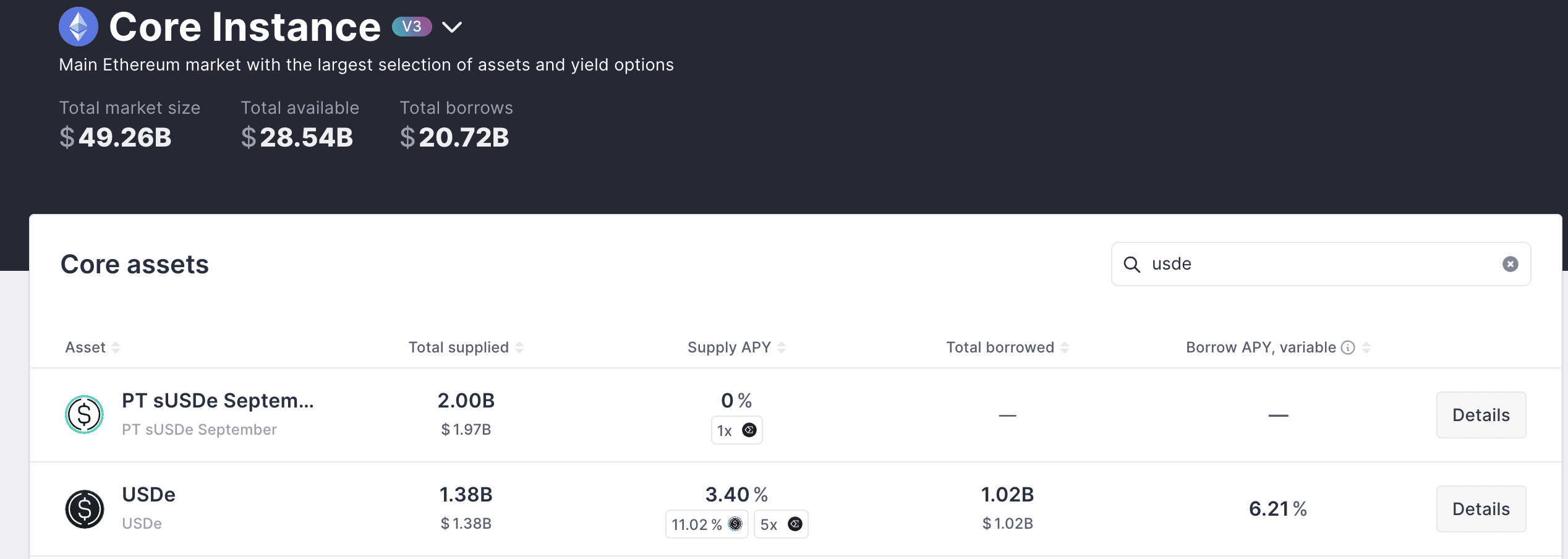The bull market has arrived, and all income mechanisms are amplifying spreads under the bullish sentiment, with stablecoin deposit and lending also bringing 'steady happiness'. BlockBeats has compiled seven mainstream stablecoin-based 'high APR pools', all with APY above 10%, which will be introduced one by one:
Huma Finance
Huma Finance is a decentralized yield platform operating on Solana, with its income sources linked to real payment financing activities, launched in April 2025, and recently reopened Huma 2.0 for deposits.
Users can mint LP share tokens by depositing USDC: in Classic mode, the token is $PST, allowing approximately 10.5% annual yield in USDC while simultaneously obtaining basic Huma Feathers; in Maxi mode, the token is $mPST, which does not accrue interest but enjoys a reward multiplier of up to 19× Feathers. Each mode meets different needs, with a maximum of 500,000 USDC allowed per wallet.
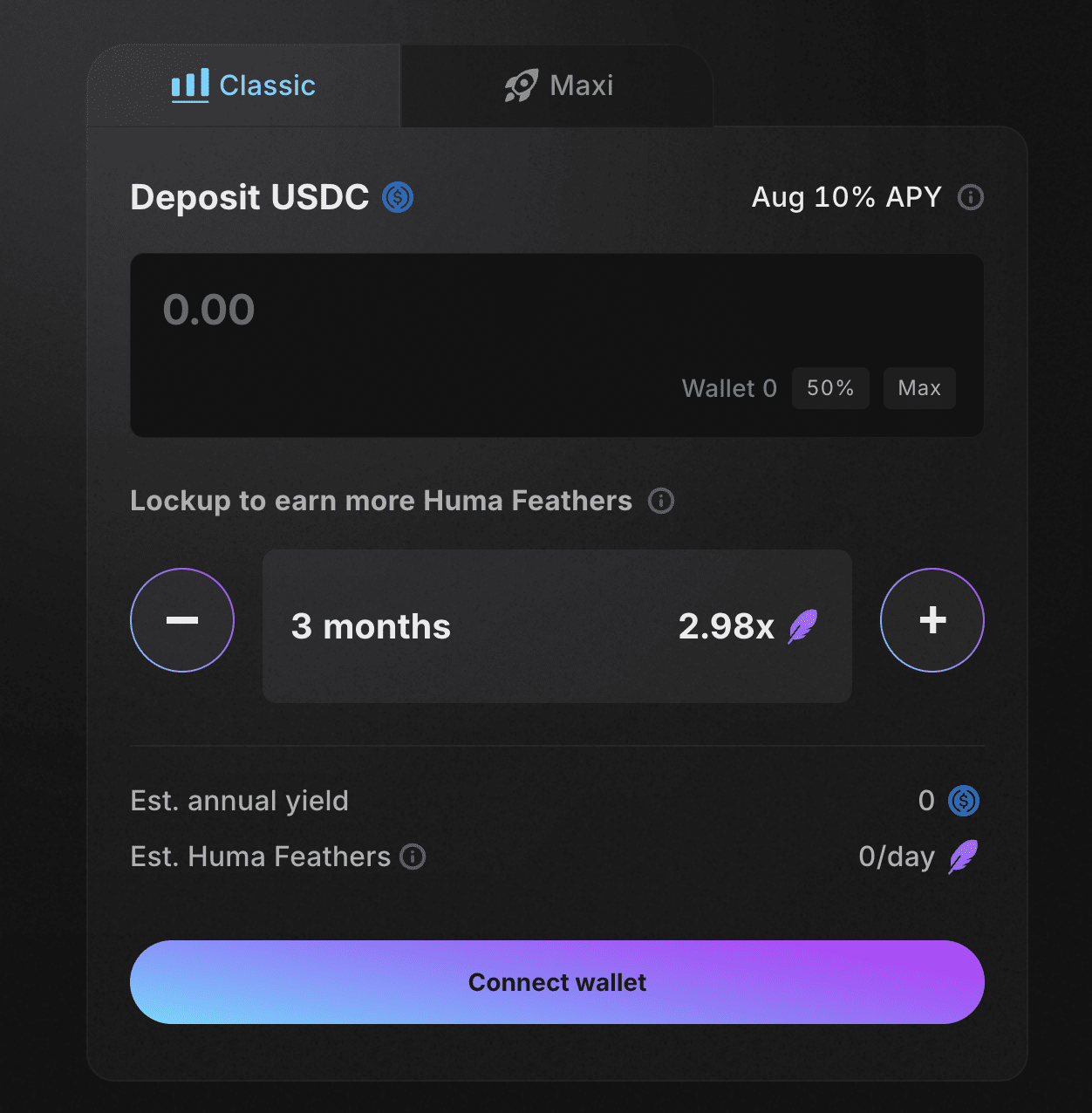
From the official Dune dashboard, since the launch of Huma 2.0, approximately $5.62 billion in trading volume has been matched, bringing users about $4.592 million in total revenue, and distributing 2.66 billion Feathers. Currently, the platform has approximately $150 million in active liquidity, of which about $104 million is directed towards PayFi (payment financing) business, with the remaining $46.015 million in a redeemable Liquid state.
Silo Finance
Silo Finance is a 'risk-isolated' non-custodial lending protocol deployed across multiple chains: each asset has its own independent market (Silo), with funding supply and lending not interfering with each other, and risks divided by asset. Users only need to deposit supported tokens (such as USDC, ETH, WBTC, etc.) into the corresponding Silo to automatically earn interest according to market parameters.
According to DeFiLlama data, as of now, Silo Finance's total TVL is approximately $228 million, distributed across chains such as Sonic ($113 million), Avalanche ($46.2 million), Ethereum ($44.4 million), and Arbitrum ($23.53 million). Selecting the Managed Vault for USDC shows that Silo Finance can provide an APY of 7%-13%.
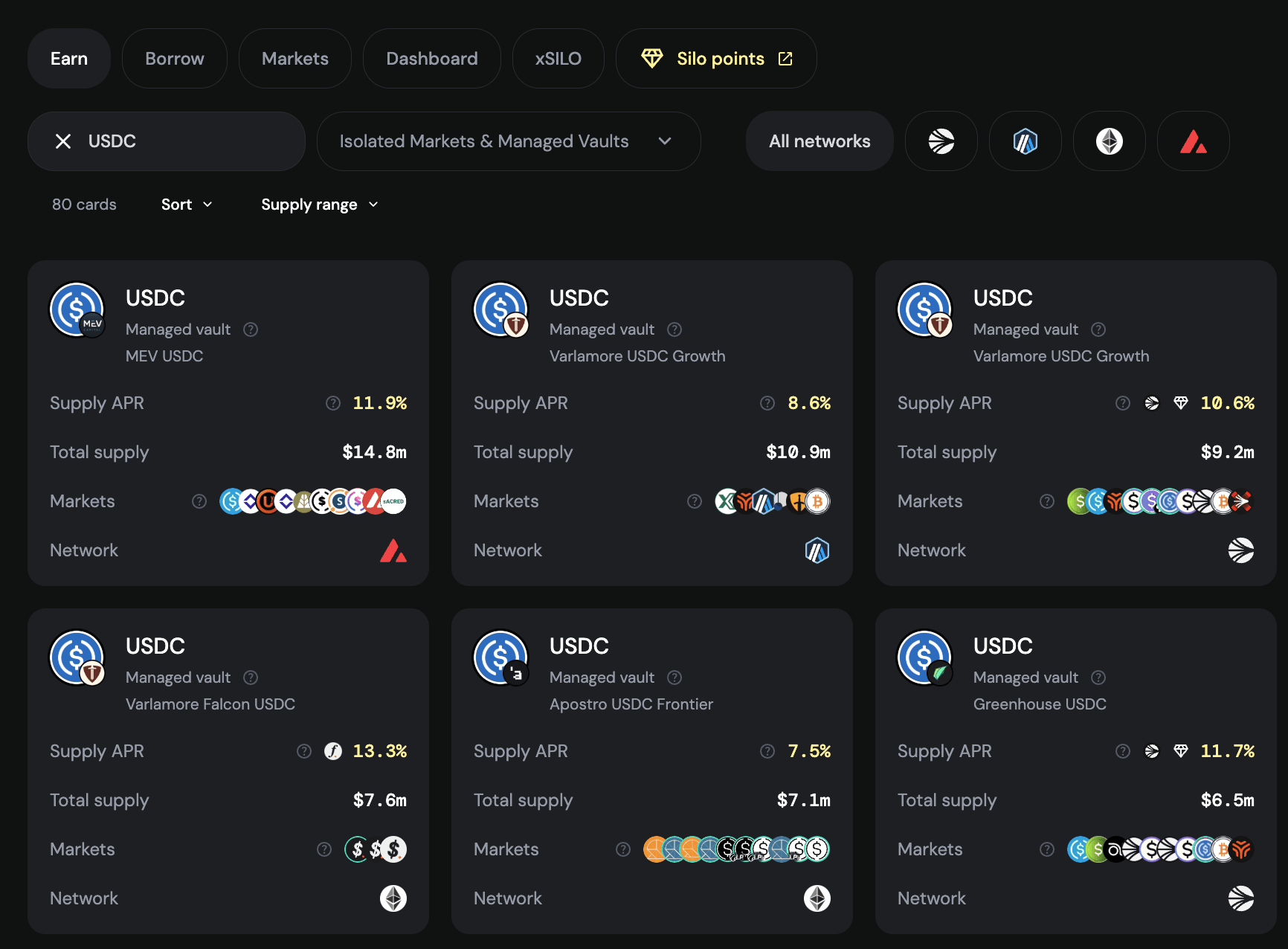
BFUSD
BFUSD is a 'margin asset with passive income' launched by Binance, designed specifically for futures traders. Users can exchange USDT or USDC for BFUSD at a 1:1 ratio and store it in a U-based contract account, automatically receiving daily stablecoin-form income without the need for staking or additional operations.
According to the official page, the income sources of BFUSD are mainly divided into three parts: the base annual yield rate (Base APY) is 3.97%, derived from Binance's hedging trades and staking strategies; the derived annual yield rate (Derived APY) is 4.89%, coming from additional income distribution of BFUSD under the joint margin model, requiring holders to conduct at least one U-based contract trade to activate; the wealth management annual yield rate (Wealth Management APY) is 0.40%, coming from the income allocation of Binance wealth management products. The combined annualized yield for holding BFUSD is approximately 9.26%.
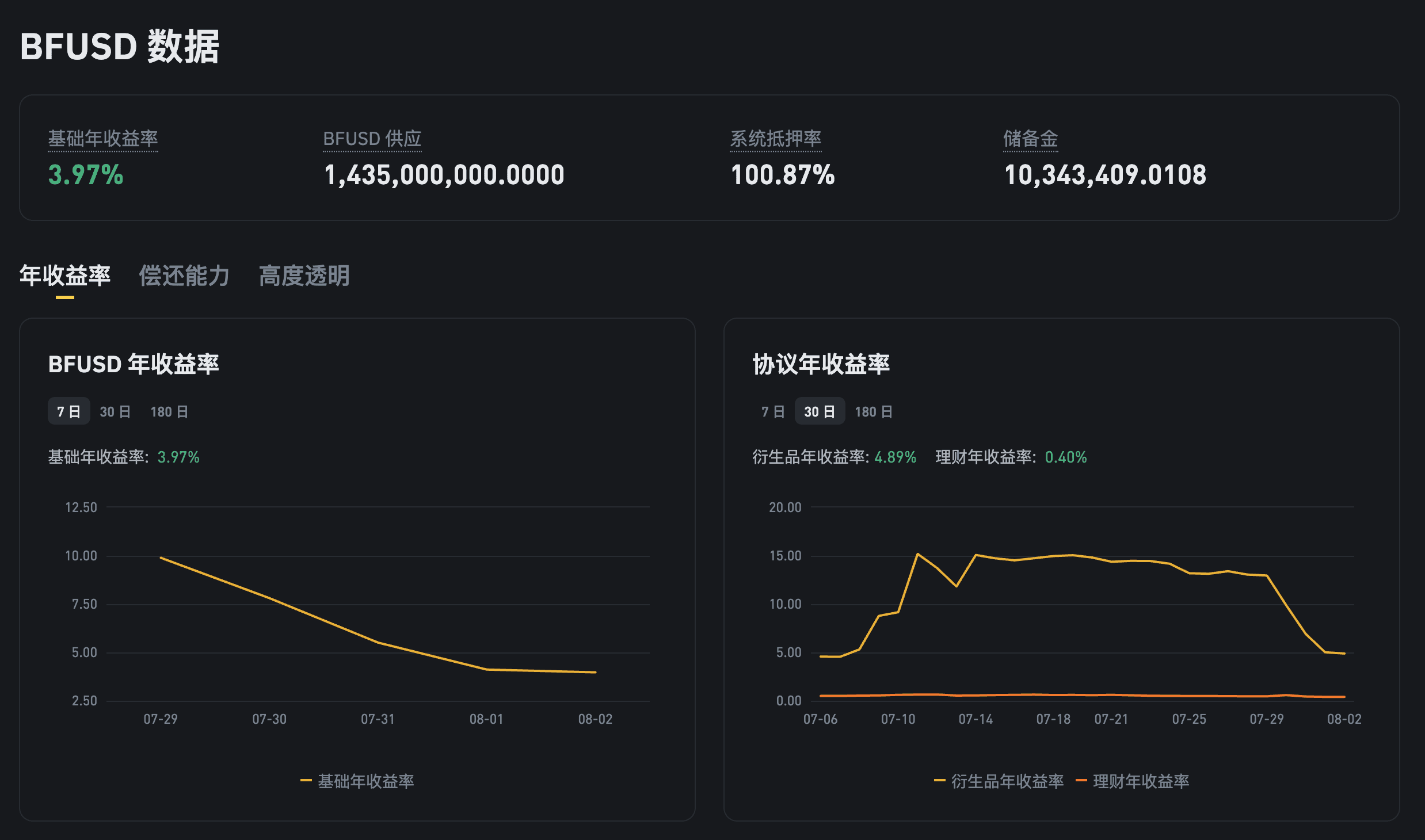
In terms of risk control, BFUSD has a system collateralization ratio of 100.87%, and Binance has equipped it with a special reserve of $10.34 million to ensure redemption capacity during extreme market fluctuations. Furthermore, the total supply of BFUSD is approximately 1.435 billion tokens, and the limit is allocated based on the user's VIP level; if a higher limit is needed, additional quotas can be obtained by opening sub-accounts.
Each time BFUSD is bought or redeemed, the platform charges a fee of 0.1%. Rewards are calculated based on the 'minimum BFUSD balance in the daily snapshot' and are directly credited to the user's U-based contract account the next day; users can check details in the 'Reward Records'.
StandX
StandX is a Perps DEX currently in the Alpha testing phase, co-founded by Aaron Gong, former head of contracts at Binance, and a former Goldman Sachs colleague, funded by the Solana Foundation. In addition, StandX's core product is DUSD, which allows users to mint DUSD at a 1:1 ratio using USDT or USDC.
In the StandX 'Deposit USDT to mint DUSD' interface, users can directly select the asset (such as USDT) to deposit in the input box and enter the amount, and the system will instantly show how much DUSD will be obtained. The current strategy calculates an annual yield rate: APY is 10.6%. A fee of only 0.1% is charged upon redemption.
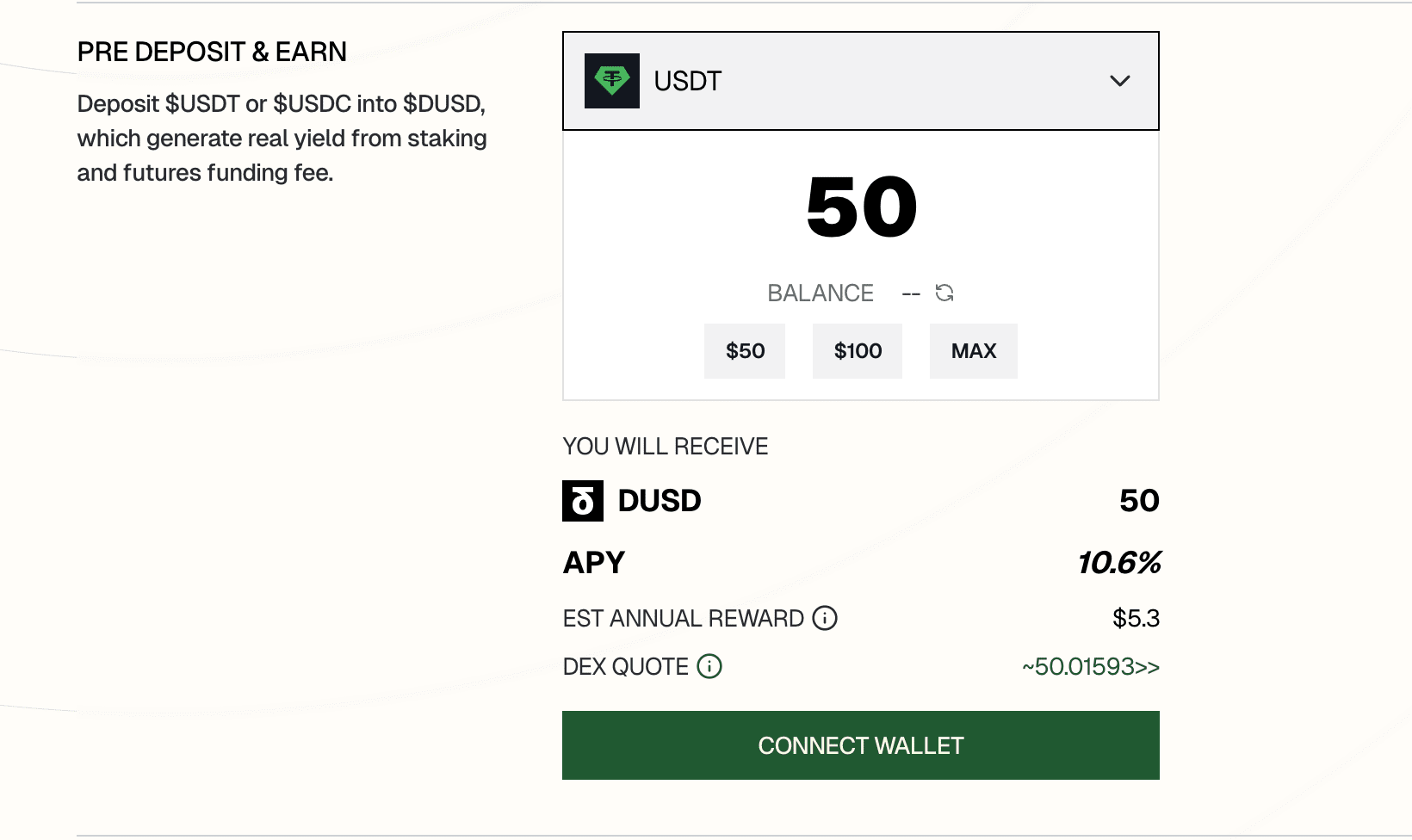
Holding DUSD allows users to enjoy two major sources of income: one is the staking income from mainstream assets like ETH and SOL, and the other is the income from funding fees of short-term perpetual contracts. The instant annual yield for DUSD once approached 13%, but the seven-day average displayed on the official website is about 7.5%.
Wasabi
Wasabi Protocol is a 'CultureFi' leveraged trading platform established in 2022, initially focusing on leveraged long and short strategies for niche assets such as NFTs and memecoins, later expanding its business to broader DeFi leverage and market-making fields. Investors include Electric Capital, Alliance DAO, and Memeland.
Wasabi Earn, launched on the Base network by Wasabi Protocol, allows users to open Finance in the Coinbase Base App, deposit USDC with one click, and automatically enjoy annual returns of up to 20%.
This part of the income comes from the on-chain leveraged trading strategy behind Wasabi: your USDC will be used as liquidity for up to 456 trading pairs, funding market-making and leveraged lending, with the interest paid by borrowers eventually returned to depositors. So far, it has supported a total trading volume of $1.23 billion, with a cumulative TVL of $23.8 million.
Wildcat-KAI2USDC
Wildcat Labs was established in 2022 and is headquartered in the UK. It is a 'risk-isolated' uncollateralized lending protocol, with each market (Silo) operating independently to prevent liquidation or vulnerabilities from spreading between markets. So far, Wildcat has accumulated over 5 different asset markets on mainnets such as Ethereum, with a total TVL exceeding $70 million (including the latest USDC market, which has also surpassed $2.1 million in lending volume).
On August 1, 2025, Bodhi Ventures—a Web3 venture capital institution led by Kain Warwick, founder of Synthetix and co-founder of Infinex—opened its third USDC market on Wildcat, publicly seeking a limit of 10 million USDC, with a base lending APR locked at 16%, and the market is open-ended with no expiration date.
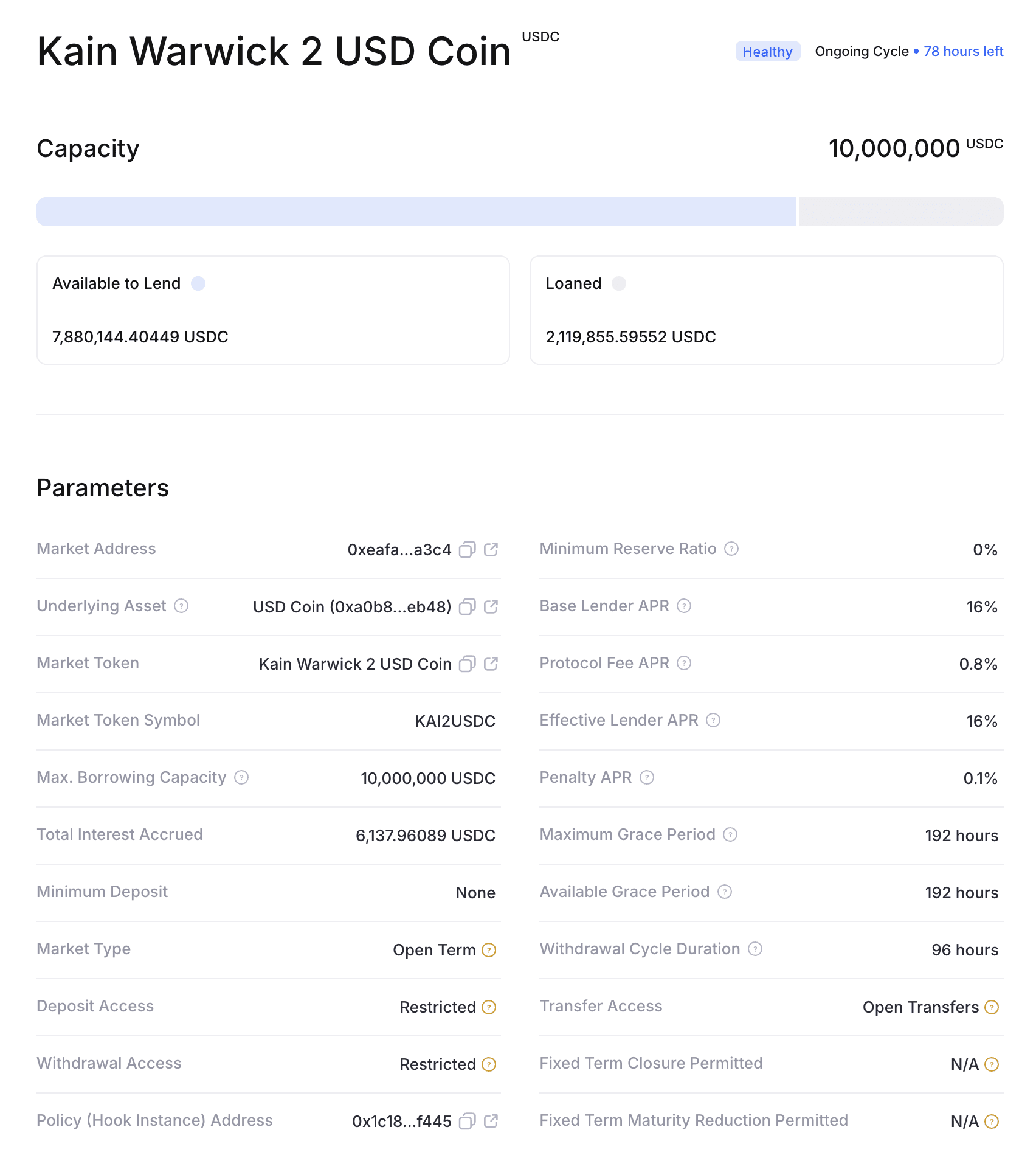
Users do not need a minimum deposit threshold; any address that completes OFAC verification can deposit USDC. After depositing funds, a freely transferable debt certificate 'KAI2USDC' will be minted. Currently, $2 million in quota has been used, with $7.8 million remaining, and 78 hours left. Withdrawals follow a 96-hour withdrawal cycle and a maximum 192-hour grace period, with a redemption fee of only 0.1%; overdue penalty interest is 0.1%.
Aave
Last week, Ethena Liquid Leverage was launched on Aave, and with the widening gap between APY and borrowing rates driven by the bull market, the short-term APY for cyclical borrowing on AAVE can reach up to 50%.
By simultaneously depositing 50% sUSDe and 50% USDe in Aave's stablecoin E-Mode, users can then borrow USDC or USDT and subsequently exchange the borrowed stablecoin back to USDe, redepositing and borrowing again in a circular manner. Each completed cycle gains additional native income from sUSDe and funding fee difference from USDe.
Currently, the common funding fee (Borrow APR) in the market is around 11%, while the base annual income from directly depositing USDe/sUSDe (Supply APR) is around 12%, forming a spread of about 7%. With five cycles, the theoretical 40% APY can be achieved: 12% + 4 × (12% – 5%). Additionally, with Ethena's extra rewards for Liquid Leverage (currently offering subsidies until the end of August), short-term peak APY can be pushed up to around 50%, although this is only expected to last until the end of this month, after which a significant drop is anticipated when the subsidies end.
